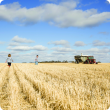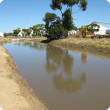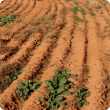Dry seasons and drought
Long-term records show that our climate is becoming warmer and drier. This trend is expected to continue, with dry seasons likely to become more frequent over southern Western Australia.
The Department of Primary Industries and Regional Development provides data and information on seasonal weather through its network of automatic weather stations and seasonal climate forecasts through the Statistical Climate Information system.
In dry years, the department provides information to assist growers and agribusiness to manage seasonal conditions and their consequences.
Articles
Pages
Filter by search
Filter by topic
- Livestock & animals (5) Apply Livestock & animals filter
- Livestock management (3) Apply Livestock management filter
- Drought (3) Apply Drought filter
- Climate change (3) Apply Climate change filter
- Crops (3) Apply Crops filter
- Sheep (2) Apply Sheep filter
- Livestock species (2) Apply Livestock species filter
- Grains (2) Apply Grains filter
- Fire (2) Apply Fire filter
- Feeding & nutrition (2) Apply Feeding & nutrition filter
- Floods, storms and cyclones (2) Apply Floods, storms and cyclones filter
- Pests, weeds & diseases (1) Apply Pests, weeds & diseases filter
- Pastures (1) Apply Pastures filter
- Rangelands (1) Apply Rangelands filter
- Water (1) Apply Water filter
- Water management (1) Apply Water management filter
- Pasture management (1) Apply Pasture management filter
- Resource assessment (1) Apply Resource assessment filter
- Biosecurity & quarantine (1) Apply Biosecurity & quarantine filter
- Canola (1) Apply Canola filter
- Biosecurity (1) Apply Biosecurity filter
- Drought and dry seasons (1) Apply Drought and dry seasons filter
- Frost (1) Apply Frost filter
- Land use (1) Apply Land use filter
- Lupins (1) Apply Lupins filter






